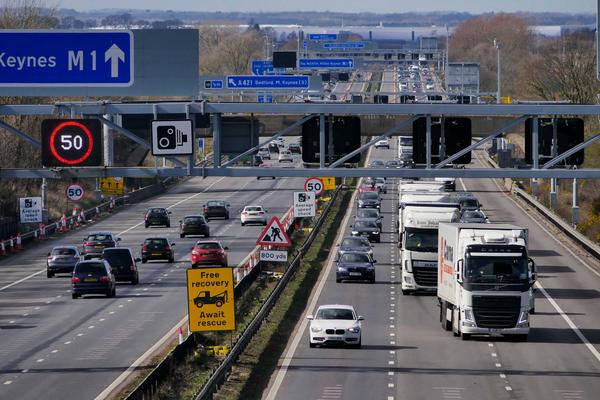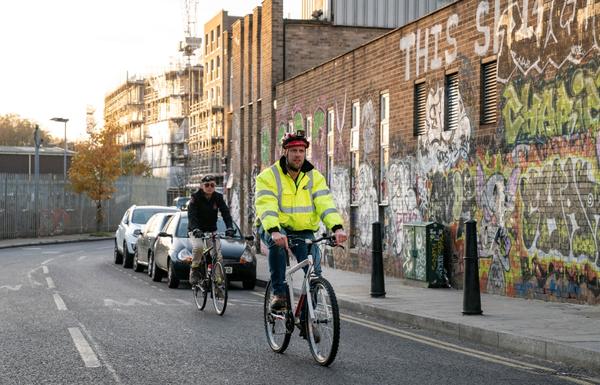News
Highway Code 2022: what's actually changing?
The Highway Code will be updated from January 29, 2022 - here's everything you need to know.


Words by: Andrew Woodhouse
Published on 23 January 2022 | 0 min read
Changes to the Highway Code will come into effect from 29 January 2022. These changes will implement a new “hierarchy of road users” and put more responsibility on drivers of larger vehicles, while giving higher priority to pedestrians and cyclists.
Under the Road Traffic Act, the Highway Code can be used in court to establish liability in the event of an accident. If you are found to be at fault in an accident as a result of not complying with the highway code, you may face charges – this includes rules which say ‘should/should not or do/do not.’ Aside from that, it’s essential that all road users stay up to date so that our roads are safe and fair for everyone. There are eight new rules coming into effect, three of which are included in the introduction and set out a new hierarchy of road users.
Under the Road Traffic Act, the Highway Code can be used in court to establish liability in the event of an accident. If you are found to be at fault in an accident as a result of not complying with the highway code, you may face charges – this includes rules which say ‘should/should not or do/do not.’ Aside from that, it’s essential that all road users stay up to date so that our roads are safe and fair for everyone. There are eight new rules coming into effect, three of which are included in the introduction and set out a new hierarchy of road users.
Rule H1: new hierarchy of road users
Rule H1 puts more responsibility on the drivers of larger vehicles to look after more vulnerable road users – as these larger vehicles can cause the most damage.
It states: “Those in charge of vehicles that can cause the greatest harm in the event of a collision bear the greatest responsibility to take care and reduce the danger they pose to others. This principle applies most strongly to drivers of large goods and passenger vehicles, vans/minibuses, cars/taxis and motorcycles.” In line with this, Rule H1 also specifies that cyclists and horse riders have a responsibility to look after pedestrians. It also states all road users have responsibility to ensure their own safety, as well as that of others.
It states: “Those in charge of vehicles that can cause the greatest harm in the event of a collision bear the greatest responsibility to take care and reduce the danger they pose to others. This principle applies most strongly to drivers of large goods and passenger vehicles, vans/minibuses, cars/taxis and motorcycles.” In line with this, Rule H1 also specifies that cyclists and horse riders have a responsibility to look after pedestrians. It also states all road users have responsibility to ensure their own safety, as well as that of others.
Rule H2: new priority for pedestrians at junctions
Rule H2 is for drivers, motorbike riders, horse riders and cyclists, and states: “At a junction you should give way to pedestrians crossing or waiting to cross a road into which or from which you are turning.”
From January 29th, 2022, you must give way to pedestrians waiting at a zebra crossing and give way to any pedestrians and cyclists waiting to cross a parallel crossing. Cyclists will have to give way to pedestrians on shared-use cycle tracks. Only pedestrians (including wheelchair and mobility scooter users) may use the pavement.
From January 29th, 2022, you must give way to pedestrians waiting at a zebra crossing and give way to any pedestrians and cyclists waiting to cross a parallel crossing. Cyclists will have to give way to pedestrians on shared-use cycle tracks. Only pedestrians (including wheelchair and mobility scooter users) may use the pavement.
Rule H3: new priority for cyclists when cars are turning
Rule H3 is for drivers and motorcyclists and states: “you should not cut across cyclists, horse riders or horse drawn vehicles going ahead when you are turning into or out of a junction or changing direction or lane.”
You should give way whether the cyclists, horse riders or horse-drawn vehicles are using the road, a cycle lane or cycle track. You should not turn at a junction if it will cause them to stop or swerve. Instead, you need to wait for a safe gap before turning. This is the car at junctions, going around a roundabout and when moving past or waiting alongside stationary or slow-moving traffic. This rule also says cyclists will now be able to ride in the centre of a lane to make themselves more visible.
You should give way whether the cyclists, horse riders or horse-drawn vehicles are using the road, a cycle lane or cycle track. You should not turn at a junction if it will cause them to stop or swerve. Instead, you need to wait for a safe gap before turning. This is the car at junctions, going around a roundabout and when moving past or waiting alongside stationary or slow-moving traffic. This rule also says cyclists will now be able to ride in the centre of a lane to make themselves more visible.

What are the other new rules?
Many of the new rules focus on cyclists, junctions and road etiquette.
Rule 63: sharing space with pedestrians, horse riders and horse drawn vehicles
Under Rule 62, cyclists are advised to slow down when overtaking pedestrians and horses and alert them by using their bell.
Road users should not pass pedestrians, horse riders or horse drawn vehicles closely or at high speed, particularly from behind. Be prepared to slow down and stop.
Road users should not pass pedestrians, horse riders or horse drawn vehicles closely or at high speed, particularly from behind. Be prepared to slow down and stop.
Rule 72: road positioning for cyclists
Rule 72 states cyclists should ride in the centre of the lane, to make themselves as visible as possible in the following situations:
• On quiet roads or streets – though cyclists should move to the left to allow faster vehicles to overtake, if it is safe to do so • In slower moving traffic – though, when traffic starts to move more freely, cyclists should move to the left to allow faster vehicles to overtake, if it is safe to do so • At the approach to junctions or road narrowings, where it would be unsafe for a driver to overtake When riding on busy roads (for example dual carriageways), cyclists should allow faster traffic to overtake them – if they can do so while keeping a minimum distance of 0.5 metres.
• On quiet roads or streets – though cyclists should move to the left to allow faster vehicles to overtake, if it is safe to do so • In slower moving traffic – though, when traffic starts to move more freely, cyclists should move to the left to allow faster vehicles to overtake, if it is safe to do so • At the approach to junctions or road narrowings, where it would be unsafe for a driver to overtake When riding on busy roads (for example dual carriageways), cyclists should allow faster traffic to overtake them – if they can do so while keeping a minimum distance of 0.5 metres.
Rule 73: junctions
Cyclists should use special cycle facilities where available and proceed as if they are driving a motor vehicle if those facilities are not available.
Rule 75: two stage turns for cyclists at junctions
Some signal-controlled junctions contain signs and markings informing cyclists to turn right in two stages.
• Stage 1: When the traffic lights turn green, cyclists wishing to turn should go straight ahead to the cycle symbol and turn arrow on the carriageway and wait there • Stage 2: When the traffic lights on the far side of the junction turn green, cyclists should then complete the manoeuvre
• Stage 1: When the traffic lights turn green, cyclists wishing to turn should go straight ahead to the cycle symbol and turn arrow on the carriageway and wait there • Stage 2: When the traffic lights on the far side of the junction turn green, cyclists should then complete the manoeuvre
Rule 76: going straight ahead
As per Rule H3, cyclists going straight ahead at a junction have priority over traffic waiting to turn into or out of the side road (unless signs or marking indicate otherwise).
As always, all road users should be aware of others. Drivers may not be able to see or hear cyclists or pedestrians, so take care before setting off.
As always, all road users should be aware of others. Drivers may not be able to see or hear cyclists or pedestrians, so take care before setting off.
Highway Code updates
Another update to Highway Code specifies drivers should use the “Dutch Reach” to open their car door before they get out. This involves using the hand furthest from the door, prompting the driver to turn their body towards the door and look over their shoulder as they exit the vehicle.
A total of 49 existing rules will be updated alongside the new rules specified above. A full summary of changes is available on the Gov.uk website, and the full Highway Code is available to read online. While this article summarises many of the changes being made, it is the individual's responsbility to make sure they have properly researched and are following the rules of the road and the guidance set out in the Highway Code.
A total of 49 existing rules will be updated alongside the new rules specified above. A full summary of changes is available on the Gov.uk website, and the full Highway Code is available to read online. While this article summarises many of the changes being made, it is the individual's responsbility to make sure they have properly researched and are following the rules of the road and the guidance set out in the Highway Code.